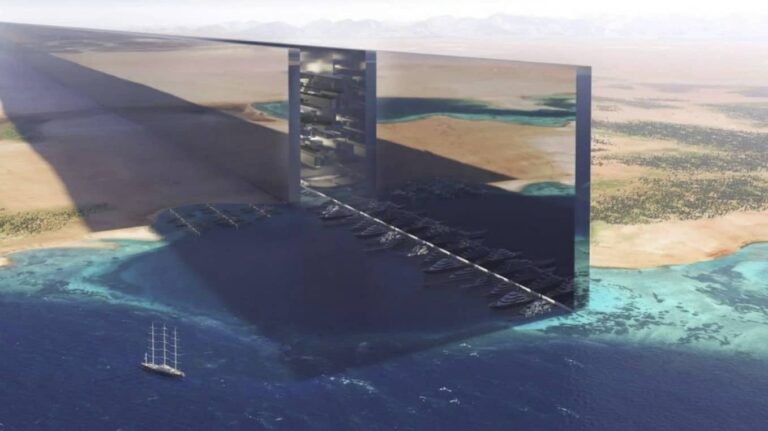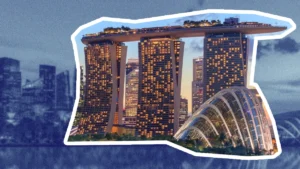Imagine two rows of skyscrapers 500 metres high (much higher than the Empire State Building in New York, which stands at 381 metres), with a 200-metre wide internal ‘open’ space occupied by means of transport and meeting places, stretching 170 km into the desert. This is The Line, the futuristic city already under construction conceived by Saudi Prince Mohamed Bin Salman and presented as an ecological paradise.
But is it really so? A study published in Nature analysed its pros and cons, and the conclusions are not at all positive.
Table of Contents
The promises
In the video presenting the project, Neom (the promoter company chaired by the prince) speaks of The Line as a self-sustainable, carbon-neutral city.
In which, its nine million inhabitants will be able to reach all essential services in just five minutes on foot and automated trains will join the two ends in just 20 minutes.
Circle or line?
According to the Nature study, this would be impossible. Considering that The Line will have a population density of 265,000 people per km2 (ten times more than Manhattan), if we chose two citizens at random they would be on average 57 km apart.
According to the authors, a circular city with a radius of 3.3 km would be much more practical, in which the distance between any two people would average 2.9 km, allowing about a quarter of the inhabitants to get around on foot.
Distances too long
Neom also promises a superfast train connecting the two ends of the city in just 20 minutes.
However, data in hand show that this promise is unfulfillable. For all inhabitants to comfortably reach a stop there would have to be at least 86 stations – which would slow down the maximum speed the train could reach between stops.
According to Nature’s analysis, at least 47% of the population would take a minimum of 60 minutes to get around, due to the city’s linear layout.
A very bad result compared to other metropolises such as Seoul (South Korea), where the 25 million inhabitants take a maximum of 50 minutes to get from one place to another.
Unsustainable construction
As far as the ecological aspect of the project is concerned, although the prince promises that The Line and the entire Neom complex (which will cover 26,500 km2 in the Tabuk region) will be powered by 100 per cent renewable energy and will not emit CO2, the problem is the construction of it all.
The realisation of the project will involve large land movements, huge infrastructures to transport vehicles, energy, water and waste, and the use of a colossal amount of materials whose extraction emits CO2.
In short, The Line is advertised as a futuristic city where citizens will live stress-free and the environment will be respected, but the premises – according to an independent study – are quite different.
Read also: Top 5 innovative housing projects made with a 3D printer












